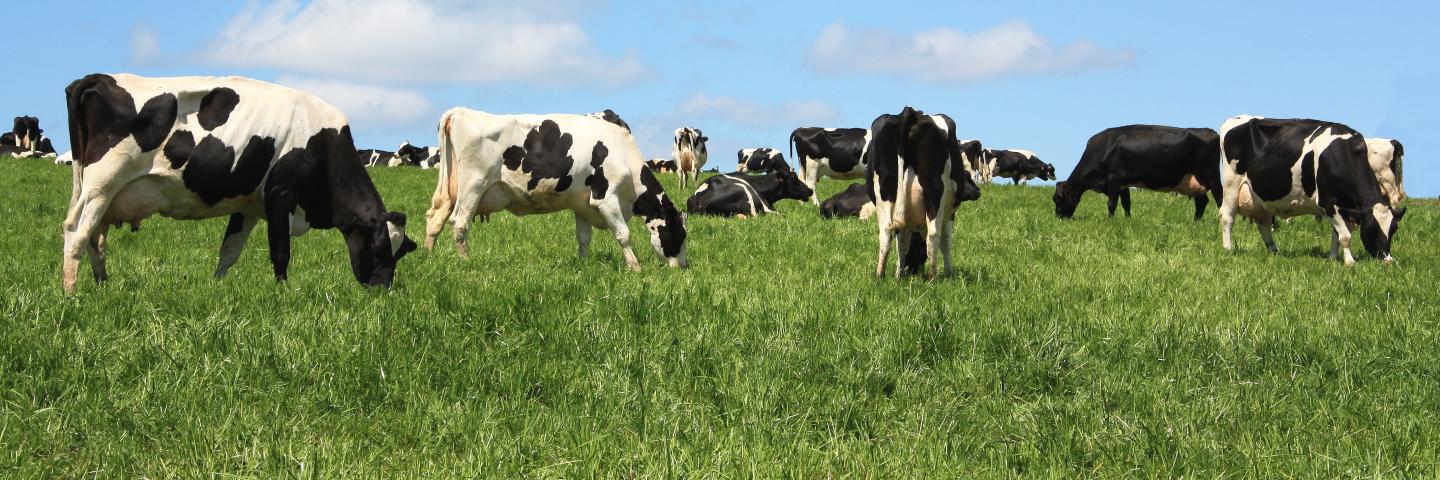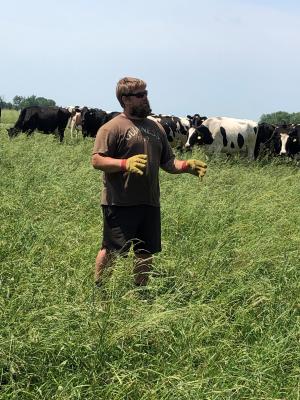Grazing Plan Helps Increase Soil Health and Time Outdoors

Life-long farmer James “Jimmy” Bloome, teamed up with NRCS through the Environmental Quality Incentives Program to bring his farm leaps and bounds with conservation practices.
Background
James “Jimmy” Bloome has been farming his whole life. His family bought their farm near Colby, Wisconsin in 1989, and over the years, their operation has changed quite a bit. They began by raising pigs, then transitioned to beef, and finally a dairy operation. Currently, Jimmy is utilizing his one-hundred and eighty acres of rotationally grazed pasture to help feed his dairy cows.
Before transitioning to an organic prescribed grazing system, he used to grow row crops to feed his cows. He faced challenges with wet conditions and crop productivity. Although the conventional system worked, Jimmy began looking for new ways for his farm to raise dairy cows.
Highlights
The challenges Jimmy faced on his farm began with the soil. Wet soil conditions caused by a high water table and poor soil drainage made growing row crops more difficult. During an initial site visit with the Natural Resource Conservation Service (NRCS), District Conservationist Amy Neigum identified the potential for a pasture and prescribed grazing system.
NRCS also provided Jimmy with a few practice alternatives to compare, and together they decided on which practices were best for his specific property and needs. Jimmy described working with NRCS as easy and enjoyable. “They are a great collaboration of people, who are easy to work with and knowledgeable. They make time for people and if they don’t know the answer they figure things out,” Jimmy shared.

Jimmy Bloome explains his grazing plan while his Holstein cows, known for their milk production, graze in the new pasture.
In 2019, he applied for the Environmental Quality Incentives Program (EQIP) to develop a pasture and implement a prescribed grazing plan in collaboration with Bill Kolodziej, the Marathon County Grazing Specialist. Jimmy’s plan included nearly three miles of fence, livestock pipeline, and a watering facility to make the grazing plan work. His contract included stream crossings, which help cattle cross safely and limit streambank erosion and sediment loading, as well as construction of trails and walkways that improve the distribution of the animals and their access to food and water.
Charles Schwartz, NRCS Soil Conservation Technician, worked with Jimmy and designed some of the practices he implemented. When asked about his progress, Charles said, “Change isn’t easy, and neither is farming in Wisconsin weather. But Jimmy’s perseverance and commitment to success got him through those early hurdles. ”When asked what the most enjoyable part of his operation is, Jimmy said, “getting to spend more time outdoors with the animals. Before implementing my grazing system, I would spend as much as 6 hours a day in farming equipment. Now I get to spend that time outside.”
Jimmy participated in a conservation cover planting of five acres in 2021, where he established permanent plant cover composed of beneficial grasses and forbs such as Beebalm, Purple Coneflower, and more.
Future Plans
Jimmy wants to keep working with NRCS and continue to improve his land. Over the next few years, he will be implementing a Comprehensive Nutrient Management Plan to ensure proper application of manure and nutrients to his land, and to protect the surrounding resources from runoff and incidental pollution. Jimmy is also interested in the Conservation Stewardship Program (CSP), which helps landowners build on their existing conservation efforts while continuing to strengthen their operation.
Additional Information
Environmental Quality Incentives Program - Wisconsin
The Environmental Quality Incentives Program (EQIP) provides financial and technical assistance to agricultural producers and non-industrial forest managers to address natural resource concerns.
Learn MoreConservation Stewardship Program - Wisconsin
The Conservation Stewardship Program (CSP) can help you identify natural resource problems in your operation and provide technical and financial assistance to solve those problems or attain higher stewardship levels in an environmentally beneficial and cost-effective manner.
Learn More
